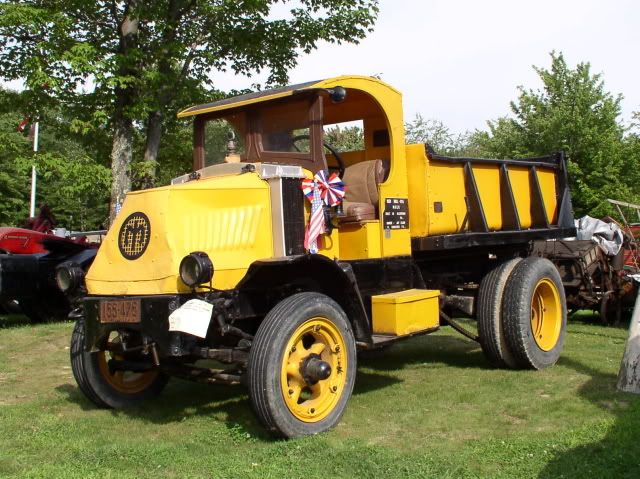I first liked this pic for the truck, tractor actually - or prime-mover.
I guessing it's some flavor of Latil but I don't know which.
In any case, it's a mean-looking rig.
When Georges Latil patented his system of "broken transmission" as a means of powering an axle also used for steering, it's open to debate whether he invented front-wheel-drive or four-wheel.The year being 1897, it was probably one or the other.
They made agricultural tractors, forestry tractors (Euro-skidders) and arty tractors.
The above is almost certainly a 4X4 and check out the winch in the front. The one you seem to see the most is the TAR (Tracteur d'Artillerie Roulante Duh) 4 which has a hood and a dash-mount radiator like the Mack AC
 |
| Same gun. Different spot in the road. |
This was the 155mm cannon model 1877 and was definitely old-school.
It's not just the spoked wheels, it's got no recuperator. That's the big shock absorber you usually see above or below the barrel nowadays.
Seems that, before the unpleasantness,France was so sure of it's balls-to-the-wall doctrine of the offensive and God's most perfect field gun, the French 75, they didn't feel they'd need any of these big old museum pieces anymore.
Ooops. And they were losing the artillery they had - over half in the first sixteen months of the war. That's the retrograde step, bringing back all these municipal-park ornaments from the dawn of time and forcing them into the breach.
This rigid-frame monster needed four to five hours to set up before it could fire a shot.
First a wooden platform was assembled. I'm guessing that's what was in the wagon hitched behind the gun.
Then a hydraulic buffer - essentially a spring - was hooked between the carraige and the platform.
By the time things were ready each wheel had its chock positioned so that, between the chocks and the hydraulics the gun could only roll back to the top of the chocks but still had to relaid after each shot.
The relaxed but professional-looking crew pictured next are in the process of loading.
See the breech-block opened to the left with the rounded nose on the inner end of it.
That is the high-tech goodie this old girl brought to the party.. back in the '70's.
This was the first successful breech obturator.
That's a hell of a word innit? What it did was successfully seal the breech. No more power lost to escaping gases. nor burned gun crews resulting from same.
The secret was a fat, grease-impregnated, asbestos gasket, mounted between the round nose and the interrupted screw.
When the gun was fired, the pressure forced the rounded portion back which squeezed the asbestos out against the sides of the breech.
This was the invention of Charles Ragon de Bange and his Système de Bange was wildly popular especially for naval guns and is still in existence to this day.
So, a pointless ramble through obscure French artillery. Savor these moments.
How 'bout some de-Bange gun porn to finish up?
We can see that, when planning a park incorporating a Modele 1877 155mm cannon, one should feel free with color.
Don't you agree?
 Oh hell. We need to see more TAR's.
Oh hell. We need to see more TAR's.
 Oh hell. We need to see more TAR's.
Oh hell. We need to see more TAR's.
Boss track-conversion.
That's a TAR 4 by the way. See the hood.
Latil TAR 4
Mack AC.
Twins separated at birth!


















2 comments:
You think that was a retrograde step?
Actually, 155 mm calibre was only fine for sieges anyway at that time, so the problematic difference was probably rather not the lacking quick fire ability (not that much of an improvement at such a calibre anyway - plenty time for aiming during the slow loading).
The real problem was that the gun was originally meant for black powder!
A much bigger retrograde step was this, though:
http://en.wikipedia.org/wiki/Coehorn
"Forty ancient Coehorn mortars, firing spherical ammunition using black powder charges,were obtained from the French,and were actually fired at the battles at Neuve Chapelle and Aubers Ridge."
http://www.1914-1918.net/trenchmortars.htm
17th century design bronze mortars employed by the Brits in 1915!
So, a pointless ramble through obscure French artillery. Savor these moments.
kurti stitching factory
stitching factory in pakistan
Post a Comment